|
|
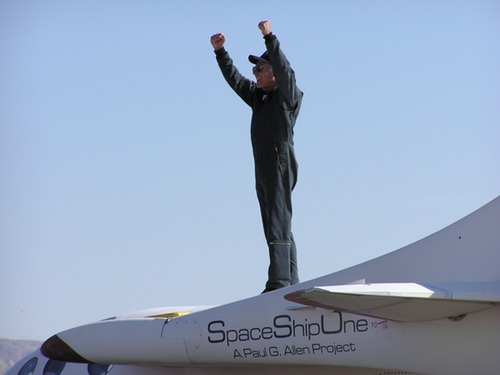 Pilot Mike Melvill stands atop SpaceShipOne after flying the vehicle into space for the first time on June 21, 2004. (credit: J. Foust) Ten years ago this morning, a small rocket-powered vehicle with a single test pilot aboard appeared to open a door into the future. SpaceShipOne, carried aloft by its carrier aircraft, White Knight, detached from the plane, fired its hybrid rocket motor and soared to an altitude just above the Kármán line, the 100-kilometer boundary widely adopted as the “beginning” of space. SpaceShipOne then glided back to a safe landing at the Mojave Air and Space Port, entering history as the first privately-developed and -funded crewed vehicle to go into space.
That flight, and the two that followed in September and October 2004 that won the $10-million Ansari X PRIZE, appeared to open a new era in commercial spaceflight. It was supposed to be one where people would fly on a regular, even frequent, basis for tourism, research, or other reasons. Yet, there hasn’t been a commercial suborbital human spaceflight since Brian Binnie piloted SpaceShipOne on its final, prize-winning flight on October 4, 2004. Had you told nearly any one of the thousands who traveled to Mojave to see SpaceShipOne’s flight ten years ago that there would be such a long gap in suborbital human spaceflight, you might have been laughed off the airport grounds.
People have written a lot about this long gap in suborbital spaceflight, and a thorough examination of the causes is beyond the scope of a single post. Virgin Galactic has gone through an extended technical development, including a recent switch in hybrid rocket motors; it now plans to begin flights late this year, about seven years later than its original plans announced in September 2004. XCOR Aerospace’s progress has been hindered at times by limited funding, as Forbes recently reported, although the company announced last month it raised more than $14 million in a Series B funding round that should allow it to bring the Lynx to market. Blue Origin, meanwhile, keeps its plans under tight wraps; it would seem that founder Jeff Bezos, who is also funding the 10,000-Year Clock, is not in a particular rush.
It’s a far cry from ten years ago, when it appeared that SpaceShipOne and other vehicles under development would soon usher in a new era of low-cost suborbital human spaceflight. For a more comprehensive review of the history of SpaceShipOne and its successors, I just published Waiting for Launch: A Decade of Suborbital Spaceflight Dreams as a Kindle ebook for just $2.99. The book is a collection of articles from The Space Review from early 2003, when SpaceShipOne was unveiled, to the present day, with updated introductions for each article as well as a new introduction and conclusion. It is not the definitive history of this industry, but it does offer a series of snapshots to show how it has developed—or not—over the last decade.
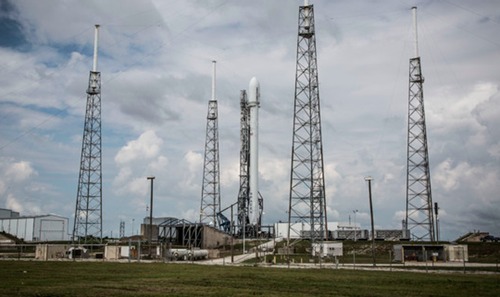 The Falcon 9 v1.1 carrying six ORBCOMM OG2 satellites stands on the launch pad Friday prior to the launch scrub. SpaceX may try again Saturday. (credit: SpaceX) While the forecasted bad weather held off, SpaceX still scrubbed Friday night’s scheduled launch of six ORBCOMM OG2 satellites. During the countdown, controllers noted a drop in pressure in the propulsion system of the second stage. Initially, SpaceX moved the launch to the end of the 53-minute launch window, at 7:01 pm EDT (2301 GMT), but with less than ten minutes left in the countdown, scrubbed the launch, unable to resolve the problem.
SpaceX has not disclosed additional details about the problem, but said it could attempt another launch on Saturday. SpaceX has not confirmed those plans as of mid-morning Saturday, but the customer, ORBCOMM, appeared to indicate that they would try again today. “We are a go for launching OG2 Mission 1 today at 5:46 pm ET [2146 GMT],” the company said on its website. If SpaceX follows the practice from yesterday, the launch webcast should start about a half-hour earlier.
SpaceX is set to try again to launch six ORBCOMM second-generation satellites late Friday from Cape Canaveral. Launch of the ORBCOMM OG2 satellites is scheduled for Friday at 6:08 pm EDT (2208 GMT); the company’s webcast of the launch will begin at 5:35 pm EDT (2135 GMT). Weather appears to be the major issue regarding the launch, with only a 30 percent chance of acceptable weather at the scheduled launch time, improving to 60 percent on Saturday.
The launch, originally scheduled for last month, has slipped several times. Initially the problem was with the Falcon 9 rocket, which suffered a helium leak in its first stage first detected during preparations for a static fire test. After that problem was repaired, an issue with one of the six OG2 satellites postponed the launch, according to ORBCOMM. “In an effort to be as cautious as possible, it was decided to perform further analysis to verify that the issue observed on one satellite during final integration has been fully addressed,” the company said June 13. That problem was addressed, the payloads encapsulated within the Falcon 9 v1.1’s payload fairing, and the launch scheduled
As SpaceX was preparing this Falcon 9 v1.1 for launch—one that will attempt to “soft land” the first stage in the ocean, as they attempted on the previous launch in April—the company has also performed another test flight of its Falcon 9R demonstrator. The company released this video of a June 17 flight from its test site in McGregor, Texas, where the rocket flew to an altitude of 1,000 meters (3,300 feet) before landing:
A different in this flight from previous ones was the addition of paddle-like fins near the top of the stage. The steerable fins, the company said in the video description, “provide control of the rocket during the fly back portion of return.” The video adds that the company will soon switch to landing legs that are stowed against the sides of the rocket during liftoff, deploying during landing. On Falcon 9R and Grasshopper tests to date, the legs have been fixed in the extended position. SpaceX did successfully deploy the landing legs during April’s flight.
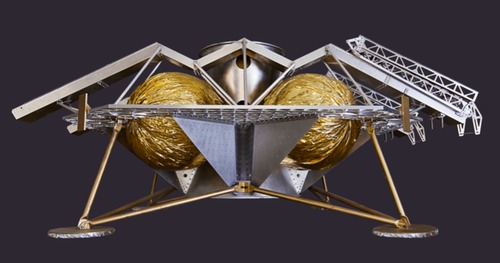 An illustration of the Griffin lunar lander being developed by Astrobotic. (credit: Astrobotic) With just over 18 months left in the Google Lunar X PRIZE (GLXP) competition, one of the leading teams in the race is offering to give other teams a lift to the lunar surface, creating the potential for what it calls “NASCAR on the Moon.” However, that team’s announcement raises questions about how it plans to get its own spacecraft there.
In a press release emailed yesterday (although, as of early Thursday morning, not posted on its website), Pittsburgh-based Astrobotic offered to carry rovers built by other GLXP teams to the Moon on Astrobotic’s Griffin lander. The company plans to send Griffin to the Lacus Mortis region of the Moon, near a pit that geologists think could lead to an underground lava tube cave.
In the release, Astrobotic said it would like to take rovers from at least four teams on that mission (it wasn’t clear if that meant four teams other that Astrobotic, which will have its own rover on the lander.) The rovers would exit the lander and then start moving simultaneously, effectively racing each other to travel 500 meters, one of the key requirements of the competition.
“Not only does the shared launch create a more exciting race for the Prize, it would be the first international competition beyond Earth orbit,” said Astrobotic CEO John Thornton in the release. It would also address one of the key obstacles for teams: while a number of teams are making progress on their rovers, fewer of them have developed systems to get those rovers to the lunar surface, or made arrangements to launch them.
In its press release, Astrobotic said that it plans to launch its lander on a Falcon 9 flying out of Cape Canaveral, Florida. That contract was announced in February 2011, with plans at that time to launch the mission “as soon as December 2013.” In an interview with Space News published last month, Thornton said they plan to launch in October 2015, and cited the discount SpaceX offered on its prices to GLXP teams that dates back to the announcement of the prize in 2007.
However, a check of SpaceX’s launch manifest fails to turn up a mission for Astrobotic, either in 2015 or later. The manifest shows 16 launches on the manifest for 2015, including 11 from Cape Canaveral, but Astrobotic is not listed among the customers. (Strictly speaking, SpaceX’s online manifest doesn’t specify when the launches take place but “vehicle arrival at launch site”, so some of the 2015 launches could slip into 2016; likewise, some of the 2014 missions listed could actually launch in 2015.)
It’s possible that Astrobotic’s omission from the manifest is an oversight, but if so, it’s a long-running one. A check of several archived versions of that manifest, obtained from the Internet Archive, failed to turn up a listing for Astrobotic. Manifests checked include those from April 2011, January 2012, October 2012, and July 2013.
Alternatively, Astrobotic could be flying as a secondary payload on another customer’s mission, and thus not appear on the manifest. That would require, though, finding a customer both willing to accept a secondary payload and one with significant excess capacity: enough to send a spacecraft with a mass that may be in excess of two tonnes (1,685 kilograms of fuel alone, plus payload and spacecraft, according to the company’s website) on a translunar injection trajectory.
A company spokesperson declined to provide additional details about the company’s launch arrangements. “We have no public update to the status of the launch at this time,” Lauren Schneider, director of communications for Astrobotic, said late Wednesday in an emailed response to an inquiry earlier in the day. SpaceX media relations did not respond to a question about Astrobotic’s launch plans Wednesday.
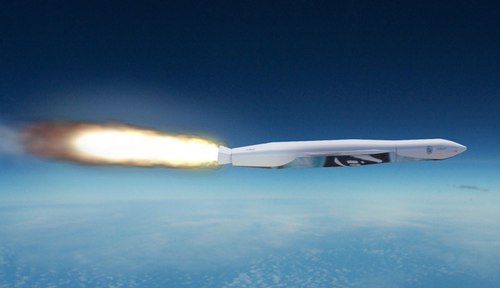 Illustration of Virgin Galactic’s LauncherOne igniting its first stage engine after being dropped from WhiteKnightTwo. Google’s reported interest in Virgin Galactic likely centers on this smallsat launch system Virgin is developing. (credit: Virgin Galactic) In the latest evidence that the search engine giant is taking an increased interest in space, British broadcaster Sky News reported Thursday that Google is in discussions to invest in Virgin Galactic. According to the report, Google would take a small stake in Virgin Galactic itself: no more than $30 million. More importantly, though, it would reportedly invest “hundreds of millions of dollars” in a joint venture with Virgin Galactic.
The report doesn’t specify the nature of that joint venture, but most likely it would involve Virgin Galactic’s LauncherOne, a smallsat launch system the company announced two years ago. LauncherOne uses the WhiteKnightTwo carrier aircraft developed originally for SpaceShipTwo, but instead of the suborbital vehicle, the plane would carry a two-stage rocket capable of launching satellites weighing up to 225 kilograms into low Earth orbit. Earlier this year, Virgin announced successful test firings of liquid-propellant Newton engines it’s developing for LauncherOne.
Any interest Google has in Virgin Galactic is likely with LauncherOne because of the company’s emerging smallsat plans. Earlier this week, Google announced plans to acquire Skybox Imaging, which is planning a constellation of small remote sensing satellites, and is one of LaunchOne’s initial customers. Google is also reportedly supporting a communications satellite constellation called WorldVu that would require the launch of more than 300 smallsats to provide broadband Internet service.
While the Sky News report got a lot of publicity (although little additional reporting; NBCNews.com got “no comment” responses from both Google and Virgin as it tried to follow up on the report), this is not the first report of a Google-Virgin linkup. Last month, Parabolic Arc reported that the two companies were in discussions about potential cooperation between the companies, including one scenario where Google would acquire the Newton engine technology and move its development to Hangar One at Moffett Field, the hangar at NASA’s Ames Research Center, near Google’s headquarters, that Google is in negotiations with the US government to lease.
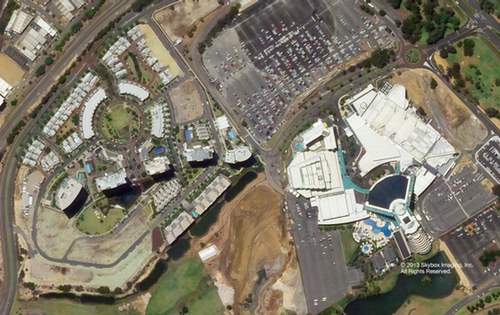 An image of the Crown Perth entertainment complex in Perth, Australia, taken by the SkySat-1 spacecraft shortly after its launch last year. (credit: Skybox Imaging) After months of rumors, Google made it official Tuesday: they are acquiring commercial satellite remote sensing company Skybox Imaging for $500 million in cash. “Skybox’s satellites will help keep Google Maps accurate with up-to-date imagery,” Google noted in a brief press release about the acquisition. “Over time, we also hope that Skybox’s team and technology will be able to help improve Internet access and disaster relief — areas Google has long been interested in.”
Skybox was a little more effusive in its announcement. “The time is right to join a company who can challenge us to think even bigger and bolder, and who can support us in accelerating our ambitious vision,” the company explained. “Skybox and Google share more than just a zip code. We both believe in making information (especially accurate geospatial information) accessible and useful.” (The “zip code” refers to the fact that Skybox’s headquarters in Mountain View, California, is just a few kilometers away from Google’s own headquarters, the “Googleplex.”)
Google had been rumored for at least the last two months to be interested in acquiring Skybox. The deal made sense for both companies. For Google, it will get access to frequently-updated high resolution imagery for use in its Google Maps and Google Earth products, and perhaps elsewhere. Moreover, Skybox’s satellite technology could be repurposed for other applications, such as broadband Internet service, an area Google is reportedly interested in pursuing.
For Skybox, it will have an owner with deep pockets to help fund the development of its planned satellite constellation. Skybox has one satellite in orbit and a second awaiting launch, but has contracts with Space Systems Loral to build a constellation of at least a dozen satellites and with Orbital Sciences to launch them. While Skybox has raised more than $90 million from venture capital firms, it likely would have needed significantly more to deploy its satellite constellation. That may explain why Google picked up Skybox for “only” $500 million after earlier rumors that valued the company at $1 billion or more.
One area to watch is how this deal affects other companies planning constellations of smaller commercial remote sensing satellites. Planet Labs, which has already deployed more than two dozen CubeSat-class spacecraft to provide medium-resolution images, has raised more than $60 million from VCs to fund its development. In addition, there have been some new ventures announced just in the past month, by Dauria Aerospace and OmniEarth, to deploy constellations of remote sensing satellites.
NASA is considering two new prize competitions that would involve sending CubeSat-class spacecraft into cislunar space and beyond, perhaps on the first launch of the Space Launch System (SLS). NASA’s Centennial Challenges program issued a Request for Information (RFI) on Monday for two new potential prize competitions, seeking input from the public over the next month as the agency refines the rules and decides whether to proceed.
The CubeSat Lunar Propulsion and Communications Challenge would offer up to $3 million to competitors that meet or exceed technical requirements while in lunar orbit. Half of that prize money is planned for the propulsion phase, where the CubeSat would have to demonstrate maintaining an orbit around the Moon of between 300 and 10,000 kilometers. The other half is for the communications challenge, where the CubeSats would compete to return the most error-free blocks of data from lunar orbit.
The CubeSat Deep Space Communications Challenge would provide up to $1.5 million for testing CubeSat communications beyond lunar orbit. The challenge would include several prizes, ranging from $250,000 to $750,000 each, for the CubeSat that provides the most data in a 30-minute period, the most data overall, the team that receives the last error-free data block from a minimum distance of 4,000,000 kilometers (about ten times the distance to the Moon) and the team that receives data from the greatest distance overall.
In addition to the in-space prize competitions, NASA is planning a series of ground qualification challenges that would provide an additional $1 million in prizes. In addition, CubeSats that pass those qualification tests would be eligible to fly on the first launch of the SLS, designated Exploration Mission 1 (EM-1), slated for launch in late 2017. Competitors, though, would also be allowed to arrange their own launch services.
The purpose of the prize is to help mature two key technologies—communications and propulsion—that could enable CubeSat-class spacecraft to take on more demanding missions beyond Earth orbit, including, perhaps, supporting NASA exploration missions. “These two challenges seek to solve these problems and, by demonstrating fully functional spacecraft near the moon and beyond, establish precedent for all the subsystems necessary for deep-space exploration with small spacecraft,” the RFI states.
The RFI remains open for comments through July 11. The RFI mentions several issues NASA is in particular seeking input on, from the technical characteristics of the prize competitions to expressions of interest from potential competitors.
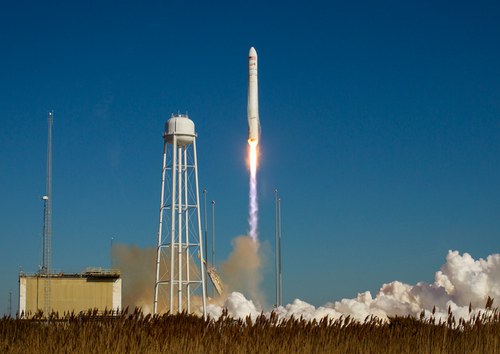 An Antares rocket lifts off from the Mid-Atlantic Regional Spaceport (MARS) on Wallops Island, Virginia, on January 9, 2014. The rocket placed a Cygnus cargo spacecraft into orbit on the first of eight such missions Orbital is under contract to perform for NASA. (credit: NASA/Bill Ingalls) A continuing investigation into the failure of a first stage engine during a static fire test last month has delayed Orbital Sciences Corporation’s next cargo mission to the ISS until at least July 1. Orbital announced Monday that the launch, which previously was planned for no earlier than June 17, would now take place no earlier than July 1. “The new launch schedule reflects the timing of the investigation into the cause of an AJ26 engine failure that occurred in late May at NASA’s Stennis Space Center during customary acceptance testing,” the company said in an update on the website for the “Orb-2″ mission to the ISS, adding that there were no other issues with the upcoming cargo mission. Orb-2 is the second of eight cargo missions to the station under Orbital’s current contract with NASA.
The next launch of SpaceX’s Falcon 9 rocket, for ORBCOMM, is also being delayed. The mission, previously scheduled for Thursday night, is now planned for June 15, although ORBCOMM’s website about the mission has not been updated with the new launch time. The launch had been planned for mid-May but was postponed by what the company called a helium leak in the pressurization system of the rocket’s first stage.
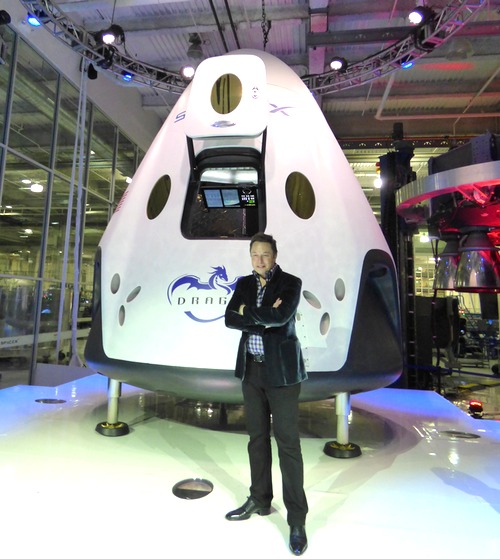 Elon Musk stands in front of the Dragon V2 spacecraft unveiled at SpaceX on May 29. (credit: J. Foust) SpaceX’s crewed version of the Dragon spacecraft could carry people into space by the middle of 2016 and return them to Earth with pinpoint landings under rocket power, the company’s CEO said Thursday night.
“We wanted to create something that was a stepchange in spacecraft technology,” Elon Musk said in the event Thursday night at SpaceX’s headquarters in Hawthorne, California, where he unveiled the Dragon V2 spacecraft. “Some of the characteristics of that are the ability to land anywhere on land propulsively… You’ll be able to land anywhere on Earth with the accuracy of a helicopter, which is something that I think a modern spaceship should be able to do.”
Musk emphasized this pinpoint landing capability a little later in the event, after showing a video depicting a Dragon V2 mission, with powered landing. “That is how a 21st century spaceship should land.”
The Dragon V2 will be able to carry up to seven people for several days (although conditions inside the capsule may be a little cramped if there are seven people in there for an extended period.) Unlike the current Dragon, which is grappled by the International Space Station’s robotic arm and berthed to a docking port, Dragon V2 wil be able to dock on its own to the ISS or another orbital facility. Although not discussed by Musk, the Dragon’s trunk is covered with solar panels to provide power in lieu of deployable solar panels. The capsule’s shape is also a little more tapered than the current, blunter Dragon, with recesses on the sides to accommodate its SuperDraco thrusters.
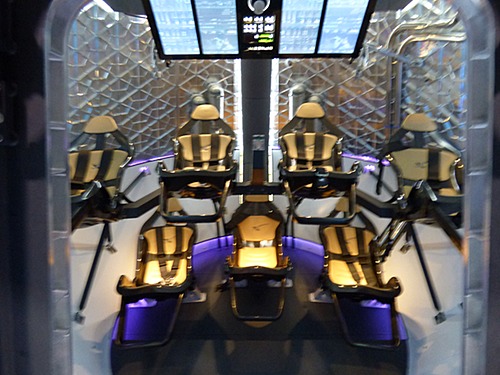 A look inside the cabin of the Dragon V2, which can seat seven people and features advanced displays. (credit: J. Foust) Those SuperDraco thrusters are, in Musk’s opinion, the biggest change between the two Dragon versions. Those thrusters, which produce 16,000 pounds-force (71,000 newtons) of thrust, serve as both the launch escape system should the capsule need to get away from a the launch vehicle during ascent, and to perform a propulsive landing. The engines are spaced around the base of the Dragon in pairs, so that if one fails the other in that pair can take over. The dragon is also equipped with parachutes as a backup.
Musk also said, in a later Q&A session with reporters, that developing SuperDraco was their biggest technical challenge. “It’s an engine that has to produce a tremendous amount of thrust and yet be very light,” he said. It also had to be very throttable, and react quickly. “It was a very tricky thing to develop.”
The challenges in developing SuperDraco led SpaceX to use 3-D metal printing to manufacture the engine. “It’s a very complex engine, and it was very difficult to form all the cooling channels, the injector head, and the throttling mechanism,” he said. “Being able to print very high strength advanced alloys, I think, was crucial to being able to create the SuperDraco engine as it is.” Musk described SuperDraco as the first “fully [3-D] printed” rocket engine.
SpaceX is preparing for a pair of abort tests that are some of the last milestones in its current Commercial Crew Integrated Capability (CCiCap) award from NASA. If those go well, along with other development, Musk said an orbital flight test of an uncrewed Dragon V2 spacecraft could take place as soon as late next year, with a crewed flight to follow in 2016.
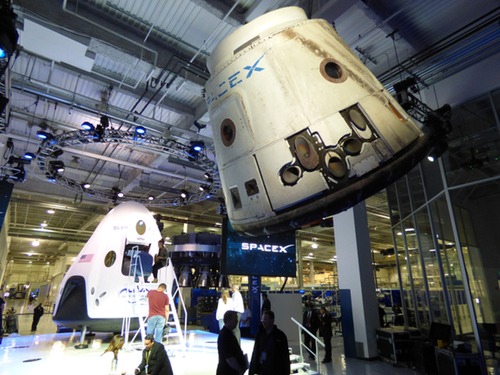 The first Dragon to return from space hangs from the ceiling at SpaceX, with the new Dragon V2 in the background. (credit: J. Foust) Development of Dragon, both the V1 and V2 versions, has been funded primarily by a series of NASA commercial cargo and crew awards, he said, estimating NASA’s contributions at about 70-80 percent of the total cost of $400–500 million to date, with a similar amount needed to get Dragon V2 to first flight. Musk indicated, though, that SpaceX would continue to work on Dragon V2 (presumably at a slower pace) even if it does not win a Commercial Crew Transportation Capability (CCtCap) contract later this year. “We’ll do our best to continue the development and still make it happen,” he said.
 An Antares rocket lifts off from the Mid-Atlantic Regional Spaceport (MARS) on Wallops Island, Virginia, on January 9, 2014. The next such mission has been delayed to no earlier than June 17. (credit: NASA/Bill Ingalls) The failure of an engine during a test firing last week will push back Orbital Sciences Corporation’s next launch of a cargo mission to the International Space Station by at least a week. The Antares launch of the Cygnus spacecraft, which had been scheduled for the early morning hours of June 10 from the Mid-Atlantic Regional Spaceport (MARS) in Virginia, is now planned for no earlier than June 17, the company announced Wednesday. Orbital calls the new launch date a “planning date” that is subject to change.
Orbital delayed the launch after an AJ26 engine suffered an unspecified failure during a test firing May 22 at NASA’s Stennis Space Center. The first stage of Antares is powered by two AJ26 engines, “Americanized” versions of Russian NK-33 engines provided by Aerojet Rocketdyne. The engine that failed in the test was being prepared for an Antares mission in 2015, but Orbital is holding off on the next launch while the investigation proceeds.
This mission, designated Orb-2, is the second of eight missions to the ISS under Orbital’s current Commercial Resupply Services (CRS) contract with NASA. The launch was previously planned for early May, but postponed when SpaceX’s most recent CRS mission was delayed to mid-April because of a combination of vehicle and range problems.
|
|










Recent Comments